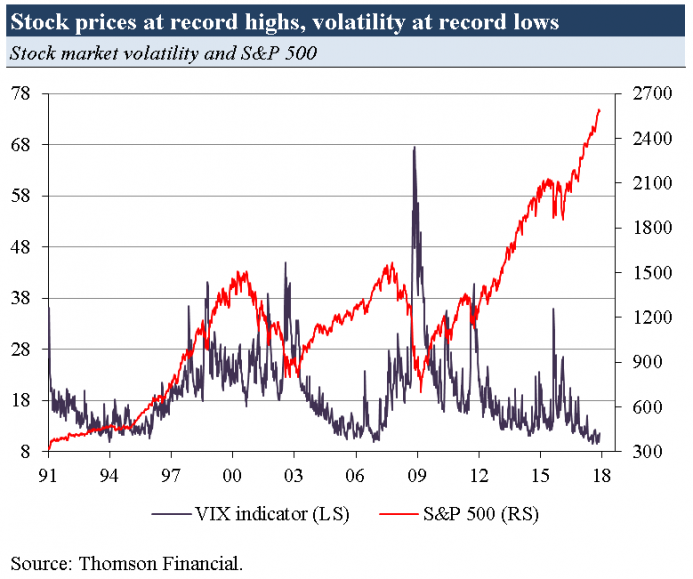Indicators for financial market “stress” have reached their lowest levels in decades. For instance, stock market volatility has never been this low since the early 1990s. Credit spreads have been shrinking, and prices for credit default swaps have fallen to pre-crisis levels. In fact, investors are no longer haunted by concerns about the stability of the financial system, potential credit defaults, and unfavourable surprises in the economy or financial assets markets. How come?

Monetary policy plays the significant role. By slashing interest rates and ramping up the quantity of money in the banking system, central banks around the world have kick-started the economies following the 2008/2009 crash. But this is not the full story. The fact that investors expect central banks to stand at the ready to fend off a slowdown of the economy and price declines in stock and housing markets is by no means less important.
The truth is that investors expect central banks to provide a “safety net.” This expectation encourages them to make risky investments again (which they would otherwise have declined). That said, central banks have caused a colossal ‘moral hazard’: Investors feel pretty much assured that the risk-reward profile of their investments has become more favorable — that they can enjoy a considerable upside, while the downside is limited.
As a result, investors drive asset prices upwards. As stock prices rise, firms’ cost of capital falls, encouraging risky investments. Consumers, with their real estate assets appreciating, go into even more debt. Maturing debt is rolled over at low interest rates, and borrowers’ spending capacity increases. In other words: The downward manipulation of interest rates and the decline in risk aversion translates into a cyclical strengthening of the economy.
…click on the above link to read the rest of the article…